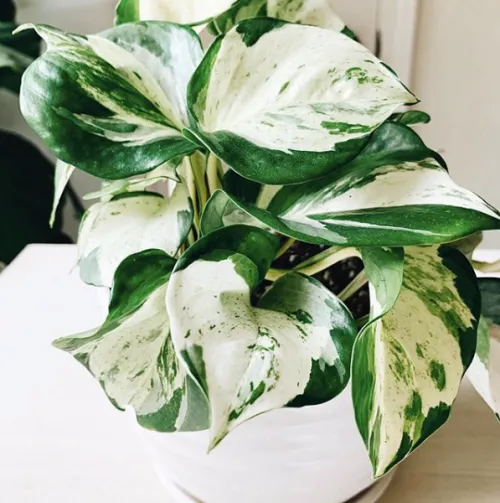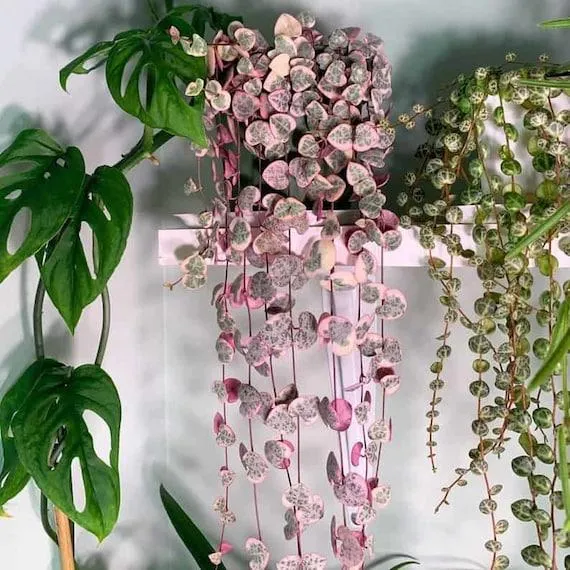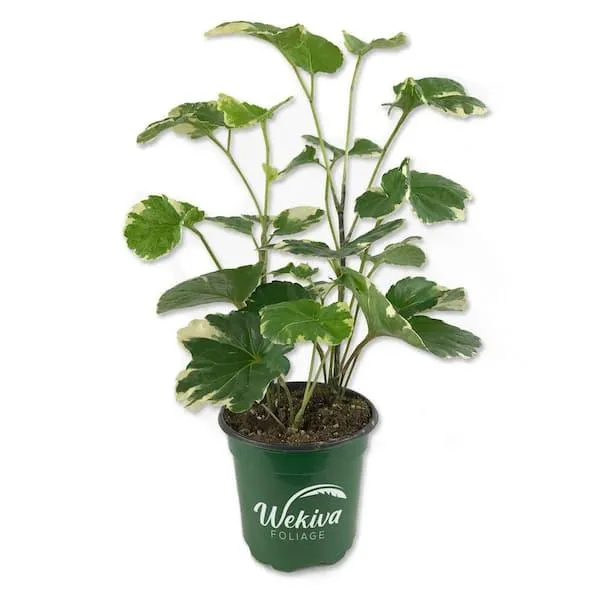Everything You Need to Know About Variegated Houseplants
If you’ve ever searched online for “variegated house plants photos,” you’ve likely come across stunning images of plants with unique coloring. Variegated plants stand out from the crowd with their attractive markings. But what exactly causes this variegation, and which types of variegated houseplants would work best for your home? This in-depth guide covers everything you need to know.
What Causes Variegation?
Variegation occurs due to a genetic mutation that prevents chlorophyll from developing uniformly in all plant cells. Without chlorophyll, certain areas of the plant’s leaves or stems lack green pigment and appear white, yellow or cream-colored instead. The mutation can happen naturally or be achieved via propagation. Variegation provides beautiful contrast and visual interest compared to solid green foliage.
From my experience as an avid gardener, variegation is often caused by a dormant chlorophyll gene becoming active in some plant tissues but not others. This gives leaves a striped, blushed or splashed appearance that is highly decorative. Sometimes whole sections lack green pigment entirely. Genetics determine the pattern and extent of variegation expressed.
Popular Types of Variegated Houseplants
Here are some of the best variegated indoor plants to consider decorating your home with:
- Philodendron:
Common variegated philodendron varieties include ‘Brazil’, ‘Imperial Green’ and ‘White Knight’. They thrive in medium to low light and trail beautifully. - Chinese Evergreen:
With upright foliage in splashed or edged patterns, Chinese evergreens like ‘Tricolor’ are low maintenance beauties for any decor. - Peperomia:
Tiny peperomias like ‘Rosso’ show off bright red coloring on cream-variegated leaves. They grow well in partially shaded spots. - Pothos:
The iconic ‘Marble Queen’ pothos has splashy green and white leaves perfect for brightening desks or walls. It grows fast and is very hardy. - Monstera:
With big tropical leaves partially lined or speckled in cream, varieties like ‘Thai Constellation’ are real showstoppers that aren’t too difficult to care for.
As you can see, variegated plants come in a stunning array of patterns to suit any style. Their unique foliage makes quite the visual statement!
Growing Conditions for Variegated Houseplants
While variegation may seem high maintenance, many variegated plants thrive with fairly basic home care:
– Bright, indirect light suits most but avoid direct sun, which can scorch leaves. West or east-facing windows provide perfect illumination.

– Temperatures above 60°F are usually best. Some can tolerate slight drafts from heat vents if the area isn’t too dry.
– Water when the top inch of soil is dry. Underwatering is safer than overwatering, which can cause foliage to yellow and die off.
– Fertilize every few months in the growing season with a diluted, all-purpose houseplant formula. Variegated plants have slower growth and lower nutrient requirements.
– Prune off struggling leaves or stems if growth seems stalled due to lack of light or chlorophyll deficiencies in leaves. This encourages compact, healthy plants.
– Propagate by stem or leaf cuttings in moist soil to multiply your collection or share with friends! Many variegated cultivars root just as readily as their solid green counterparts.
In short, like any houseplant, variegated types thrive on consistency when it comes to care routines. Watch for signs of stress and adjust as needed to keep your colorful companions looking spiffy for seasons to come.
Common Challenges and How to Avoid Them
While variegation brings beauty, it also presents some cultivation challenges versus regular green houseplants. Some issues to watch out for:

- Chlorosis or Leaf Drop:
Leaves may yellow and fall off if conditions aren’t suitable. As mentioned, avoid direct sun and check water/humidity levels to prevent this. - Reversion:
Variegation patterns sometimes revert back to plain green over successive growing cycles if care is below optimal standards. Carefully monitor water, nutrients and light. - Slow Growth:
Without full chlorophyll function, progress tends to be sluggish. Be patient and don’t expect fast-paced development year-round. - Pruning Needed:
It’s common to remove weakened or non-variegated leaves/stems to direct energy into the plant’s healthier parts and preserve its variegation over time.
With diligent care and troubleshooting, you can definitely avoid or minimize these snags. And wouldn’t you know it – the creamy splotches of variegation that give you headaches are also what make these plants so unique and eye-catching! The trade-off is often worthwhile.
Putting Variegated Houseplants to Work in Your Home
Now that you’re an expert on these lively foliage pieces, consider getting creative with how you show them off around your place:
– Use trailing varieties like pothos or philodendron to add visual appeal climbing up bookshelves or hanging pots.
– Stand upright Chinese evergreen, peperomia or monstera varieties together as a striking focal point display on a side table or credenza.
– Scatter potted variegated plants of different textures throughout your main living areas to boost ambiance and air quality.
– Try an arched or topiary-trained philodendron cascading from a high shelf or alcove for a lush sculptural effect.
– Float a variegated pothos or ivy in a glass bowl of marbles on your kitchen counter for low-maintenance charm.

As you can see, the beauty is that variegated plants complement nearly any style and find homes in unusual spaces, elevating the décor significantly. There’s a reason pictures of them grab attention – now you know how to maximize their visual pop yourself!
I hope this extensive guide has provided helpful insights into understanding, caring for and displaying captivating variegated houseplants. Let me know if any part of their care or use in interior design needs further clarification. Happy planting!
Popular Variegated House Plants
| Plant | Light Needs | Care Level | Size | Variegation Pattern |
|---|---|---|---|---|
| Pothos | Low Light | Easy | Trailing up to 6 feet | Speckled or white splotches on leaves |
| Philodendron | Medium Light | Easy | Up to 5 feet tall | cream or yellow outlines on leaves |
| Peperomia | Medium Light | Easy | Up to 2 feet tall | Cream or white stripes across leaves |
| Chinese Evergreen | Medium Light | Easy | Up to 3 feet tall | White stripes or splotches on green leaves |
| ZZ Plant | Low Light | Very Easy | Up to 3 feet tall | White or cream stripes down dark green leaves |
FAQ
-
What kinds of plants usually have variegated foliage?
Basically, all sorts of houseplants can have variegated leaves. Some common ones are spider plants, pothos, golden pothos, philodendron, monstera, palms and peperomias. It seems these species take well to genetic mutations that cause the colorful patterns.
-
What causes leaf variegation?
Essentially, variegation occurs due to genetic abnormalities in the production of chlorophyll. The variation from green is typically caused by other pigments like white, yellow or pink appearing in the leaves. Genetic mutations disrupt chlorophyll development in certain areas. Perhaps breeders have selected for these oddities over time.
-
How do you care for variegated houseplants?
Variegated plants need kinda the same care as their all-green cousins. Keep the soil moist and place in bright, indirect sunlight. At the same time, they may become stressed more easily so watch watering to prevent leaf drop. Surprisingly, the white or yellow parts cannot photosynthesize so these areas depend on the green for energy. Overall care is similar, maybe just a tiny bit more delicate.
-
Do variegated plants require more or less maintenance?
That’s debatable! On one hand, some variegated varieties might grow more slowly and need somewhat less maintenance. Their patterns of pigment mean sections do no photosynthesis. However, the variegation itself can also cause stress, upping chances of wilting, leaf drop or fungus. So in reality, they may demand similar or even slightly more TLC to keep looking their best.
-
Is variegation harmful to the plant?
In most cases, the variegation is basically neutral or harmless to plant health. Actually, the plant appears well adapted to the genetic quirk. The white bits may struggle a tad more without chlorophyll’s energy. But overall the plant survives and thrives like its plain green cousins. In fact, the unique patterns are often prized by plant collectors! Unless the variegation is very extreme, it usually does not significantly compromise the plant.

-
Why are variegated houseplants more expensive?
That’s a good question! Despite requiring similar care, variegated kinds cost more dough. One reason could be lower productivity – they grow slower with the mutations. Also, keeping variegation stable over generations demands selective breeding. This strong demand and restricted supply drive up prices. Nonetheless, the color pop they provide might kinda be worth the higher cost, stunning interiors and brightening souls. Who doesn’t love a little natural beauty?
